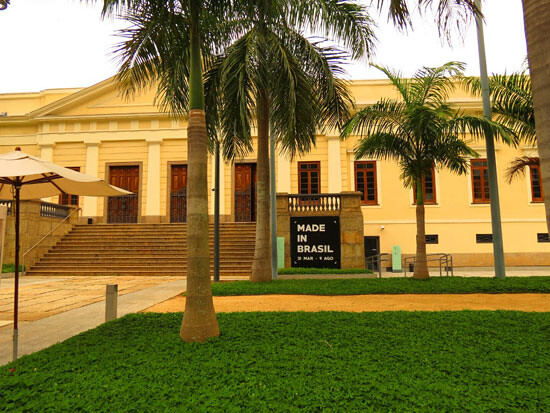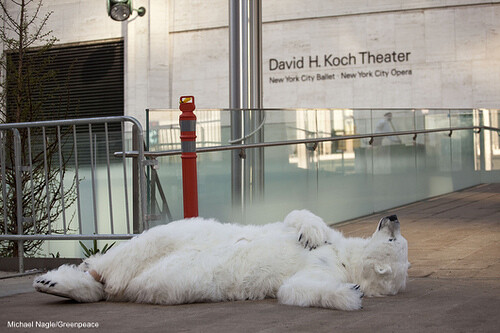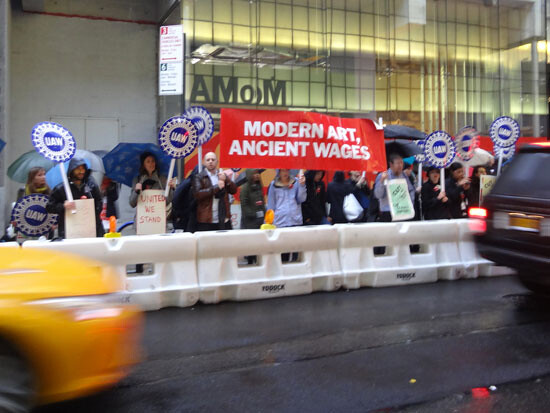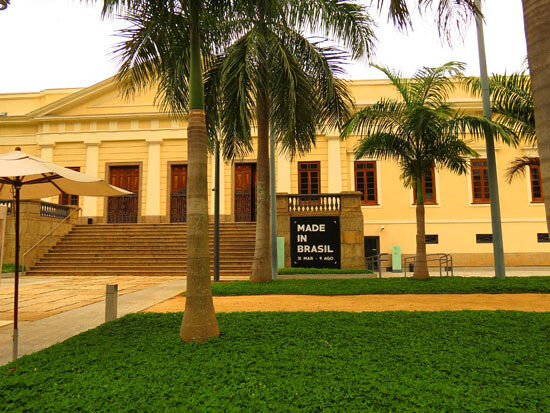The official announcement that Casa Daros, the cultural institution of the Daros Latin America Collection, is closing in Rio de Janeiro as of December 2015 came as a big surprise to Latin American cultural circles. The ambitious project insofar as it concerned exhibitions only lasted two years. The argument invoked in a press conference is a lack of financial means to keep the project running. After an investment of sixteen million reais in 2006 (roughly $8 million USD) to buy the building, and then sixty-seven million reais (roughly $21.5 million USD) to restore it, one would presume that somebody would have run through the budget for sustaining such an ambitious project.1 The loss for Latin American culture is grave, because Casa Daros promised to be a continental cultural center that would transcend Latin America’s nationalist fragmentation and become an international reference point. There are many reasons why I’m sorry about the disappearance of Casa Daros,2 but here I’m interested in understanding its loss as a cultural symptom and how this symptom connects with general issues concerning the fickleness of philanthropic institutions. The more modest plan now is to circulate and lend works from its 1200-piece collection to other venues. The Daros Collection stands out among its peers because it assembled whole bodies of work by artists, rather than single representative examples.


Patronage systems have always brought the promotion of cultural activities at least partially into the hands of private initiative. In theory this split helps balance the influence of official government policies with a broader range of interests in culture. The role of government in cultural matters in capitalist countries, however, has been steadily declining, and philanthropic and nonprofit organizations have been progressively taking over public duties. The reliance on philanthropy in the US, for example, has been so long-standing and extreme that the absence of government is rarely questioned unless some fraudulent activity by private institutions becomes known to the public. The US is one of the few countries where culture is not dignified with its own ministry, and where it’s taken for granted that the private sector should assume the responsibility. The rewards are straightforward. Private donors get an organization or a building named after them long before their death. Corporations use cultural largesse for public relations and advertising. Governments, in turn, help them with tax exemptions (a benefit, it should be noted, that Daros waived in Brazil, as do other organizations on occasion) and, in exchange, save on operating costs and the stresses of controversial decisions. In principle this would appear to be a perfect and impeccable deal that benefits everybody, including the collective culture it promises to serve.


Though often confused, there is a difference between altruism and philanthropy. Altruism is totally ego-distant and only focused on charitable effect. Meanwhile, philanthropy—although it may have an altruistic component—tends to include other agendas. Philanthropy may be a tool for indemnification or restitution of ill-acquired wealth, a way to correct inequality in income distribution, a correction of government ineptness, a help in community building, or a combination thereof.3 But it is often part of larger political agendas, sometimes directed by government policies, but at other times designed to change those policies.4More often then not, philanthropic projects bear and promote the names of their funders. Daros is an arbitrary name and an exception to this, and many nonprofit organizations pursuing altruistic goals have the good taste to remain depersonalized. It is customary, though, for private patrons to have their names prominently displayed, whether in hospital elevators, on benches, or as the title of whole building wings, museums, or other prominent cultural sites. At the Lincoln Center in New York, the original Philharmonic Hall was rechristened “Avery Fisher Hall” in 1973 thanks to a $10.5 million donation from Mr. Fisher. But in 2015, the name was changed to “David Geffen Hall” after Mr. Geffen donated $100 million (of which $15 million went to the Fishers to buy out their naming rights). The other $85 million is exempted from taxes; thus, something close to $30 million will not be used to fund government services. Since much US government money is spent on weaponry and other war expenses, this sounds okay. But in other countries, it wouldn’t be okay. The land on which Lincoln Center stands is owned by New York City, but the whole musical enterprise—which was started by John D. Rockefeller—is private. Same-day standing-room tickets for the Metropolitan Opera cost around $25, which may not cover production expenses, but it does not provide a public service to those who can’t afford it, either. Meanwhile, in the same compound, the New York State Theater, built by the state of New York and owned by New York City, became the David H. Koch Theater in 2008 and will remain so until 2058. Koch paid $100 million dollars for this. The Koch family also has the right of first refusal for any later attempt to rename the building. This overview is from the macro view of money.


From the micro view: when it comes to artists who receive a fellowship because they are recognized for their achievements and merits—in other words, for their contribution to public culture—the tax exemption in the US is granted to the giver, not the receiver. The receiver’s money (unless dedicated to tuition at an accredited institution) is taxable income. When a museum acquires an artwork with the help of a patron, there’s usually a 20 percent discount on the sale price. This means that the philanthropic act is not only exercised by the donor, but also by the seller; the artist and the gallery each donate ten percent of the sale amount. The donor gains social prestige and a mention in the signage when the work is exhibited, as recognition for his or her generosity. The artist hopefully gains visibility and, possibly, a bump in his or her market price. The artist’s part in the philanthropy is not tax deductible. When nonprofit institutions invite artists to speak, they usually only offer a “symbolic amount” as an honorarium. “Symbolic” is a euphemism for “we know you are worth much more, but we cannot afford to pay that.” The difference between the amount the artist is worth and the amount that he or she is actually paid is the philanthropy exercised by the artist, which is not tax deductible either. When calculating preparation and travel time, what remains of the honorarium after taxes is close to minimum wage. Fortunately for culture and education, as artists we feel like missionaries and don’t mind helping and supporting struggling nonprofit organizations. Harvard and MoMA come to mind as recent examples.


The promise of potential gains is what museums like to use as leverage. Since the benefits don’t necessarily turn out to be true, the discount becomes forced philanthropy, and therefore exploitative. Philanthropic organizations that set up events for worthy causes also use the argument of increased visibility (and moral standing) to extract gifts from artists. Forced philanthropy at the individual level is nothing new and, depending on how one interprets it, may be seen as the basis for exploitation in general. Tipping is an example. Initially a gratuity to reward efficiency and politeness beyond the call of duty, tipping in the US has become a form of mandatory altruism that started at 15 percent of the bill but has more recently risen to 20 percent. Under the guise of benevolence, customers are forced to make up for the employer’s unwillingness to pay even minimum wage.
Waiters, just as adjunct faculty in academia, are considered self-employed and therefore responsible for their own benefits. Some day, when the remaining ethical hurdles that prevent buying good grades are overcome, students may start tipping their instructors. Artists, however, are in a different category, since they are vendors and don’t offer services. Art practice is a combination of self-employment, entrepreneurial initiative, creative research, and labor. Unless the artist is very successful, this normally adds up to the first step in self-exploitation. Culture is thus outsourced to individual initiative and work. It’s a mystery that the number of artists in the population keeps growing.
While corporations may technically represent national or state interests, they can also distort these interests by prioritizing their own and by exercising hidden forms of censorship through their sponsorship.5 Fund-raising “gala dinners”—ceremonies where, at great expense, the oligarch class mingles with the political class—are one of the self-selecting arenas where ideas and funds meet and celebrate each other. For ethical reasons, it’s expected that the dinner expenses never exceed the already staggering figure of one third of the funds raised.6 Curiously, the net return an artist receives after commissions and taxes doesn’t usually exceed one third of the sale price either.


All this doesn’t mean that philanthropy is innately wrong or that it should be abolished. Too often, governments are crowded with philistines or incompetent individuals and, while it often shares the same ills, the private sector at least tends to attract and reward qualified technocrats with better salaries. The disadvantage, however, is that when philanthropy takes over government functions, it doesn’t have to fulfill the requirements of accountability and transparency one expects from the public sector. This leaves the door open to uncontrolled capriciousness. While a democratic government may (in theory) be voted out for dropping a project considered necessary by the people, a private philanthropist may, without any public accountability, stop funding something out of boredom, a shift in interests, or, as in the Daros Collection case, bad arithmetic.
Casa Daros had assumed government functions on a continental level, albeit with utopic thinking. There were few precedents for this in the arts and, unfortunately, none were successful. The visual arts activities of the Organization of American States, sharing some of the same aspirations, had only partial and temporary success. After the organization expelled Cuba, it was widely boycotted by artists throughout Latin America. Being located in Washington, DC didn’t help much either. The activities of the Cuban Casa de las Américas were somewhat more effective, particularly during the decade of the 1960s. However, they were hampered by the restrictions imposed by the US on travel to Cuba.7 None of these organizations managed to create a feedback loop that would truly nourish the countries involved or addressed. Big private collections, like the Patricia Phelps de Cisneros Collection, or the Cisneros Fontanals Art Foundation, now function more like the new model exemplified by Daros: through occasional exhibitions, grants, and the loaning of works, but lacking a real institutional center in Latin America.
Casa Daros originally seemed intent on filling this gap. After a long search for the right location, the organization settled in Rio de Janeiro. It was relatively centrally located and had the potential to integrate Portuguese-speaking Brazil with the rest of the Spanish-speaking continent. All that is about to be gone. If the project were taken over by the Brazilian government, as some still hope, it would be weakened by an immanent fear of potential Brazilian imperialism. Swiss capital and nationalism were definitely seen as less threatening in this regard.8


The main disappointment is still the breach of the commitment that was promised. Artists were told that Daros acquired works for “safekeeping” and not for investment. The intention was to create a source of primary information for future reference about those artists who the curators of the collection deemed important. Unavoidably, the choice of artists and works provides as much a portrait of those selecting as of those selected. Statistically, nevertheless, it was predictable that, given the quantity of works accumulated, the collection would offer an invaluable amount of crucial and useful information for future research. The Casa de las Américas, without any organized curatorial planning and relying exclusively on donations, was still able to create one of the best collections of Latin American art of the period 1960–80.
When a philanthropic institution commits itself to an activity normally performed by a government, it enters something akin to a marriage contract, one that only death or the Pope should be allowed to annul. Hopes are raised, and there is no recourse when these are allowed to fall. Once a private entity starts a project on this scale, it forfeits the right to stop it, unless it wants to show arrogance and capriciousness.


Philanthropies and nonprofit cultural organizations define themselves around a mission, and people working for them get involved in it, with an investment that goes way beyond just work hours. Yet, when the project is ended without any transparency, they realize that they were nothing more than normal employees strictly bound by labor contracts. The dissonance was visible during the preparation of Daros’s last exhibition, “Cuba: Fiction and Fantasy.” The staff, with their notices in their pockets, were fully focused on perfection, and opening night became an homage to a lost belief; the evening had the feeling of a wake instead of a celebration. This was enhanced by a small group of picketers with signs that read “LAVADAROS” (a pun on “washed” in Portuguese), alluding to money laundering.
However, the problem is not only in the defrauding of expectations. While museums have policies that roughly protect works from arbitrary deaccessioning, private collections don’t. There are collections without any aims other than monumentalizing themselves and then proceeding to sell their assets wholesale. Although this damages the artists, the collections cannot be blamed (Carl Saatchi getting rid of his collection of Sandro Chia’s work in 1984 comes to mind) since there is no law preventing them from doing so. When the plans are more ambitious and directed towards the public sphere, the lack of accountability has more consequences than just upsetting art markets. To continue the marriage metaphor, there is no prenuptial agreement, no appropriate document stating the purpose and timespan of the project, and specifying what steps will be taken in the event of errors, changes of mind, or “acts of God” that lead to cancellation. Unprotected, the temporary beneficiaries are thrown back into the same gutter where they were found. The artworks, meanwhile, may bring in lots of money and end up in a different, gold-plated gutter.
Silas Marti, “Rio espera resposta da Casa Daros sobre resgate public,” Folha de S. Pablo, May 22, 2015 →.
I should give a full disclosure here to avoid later accusations: my work is in the Daros Collection, I had a big exhibition organized by the collection that travelled through seven countries, I helped organize a symposium on literacy for them, I am working on a pedagogical project for the last exhibition (featuring Cuban artists from the collection), and I am friends with all the employees, curators past and present, as well as with the owner of the collection, Ruth Schmidheiny.
Much of the endowment wealth of respected foundations (e.g., the Guggenheim Foundation) came from the activities of old robber barons, or from new generations of oligarchs that profit from dubious monopolies and artificial financial bubbles. The wealth of the Schmidheiny family was made with asbestos-laden Eternit, a fact sometimes held against the Daros Collection. The collection and the Casa Daros project, however, is said to be the property of Ruth Schmidheiny and is financed with the divorce settlement reached with her former husband, Stephan Schmidheiny.
In the late 1960s the J. M. Kaplan Foundation channeled CIA funds to sponsor the formation of Central American leadership, the National Student Association (which was designed to counteract international leftist student movements), and anticommunist cultural associations like the Congress for Cultural Freedom and its Latin American publication, Mundo Nuevo. In the US, tax-exempt groups that gather and invest money to change government policies are categorized as “527 organizations.”
In 2001 the General Motors Foundation donated $10 million to the Smithsonian Institute to rename the latter’s hall of transportation “GM Hall,” raising fears that mass-transit systems would be underrepresented. Lawrence Small, the director of the Smithsonian, was later willing to give “CBS Corporation’s Showtime network what amounts to the right of first refusal on all documentaries dependent on Smithsonian archives or staff time” (Tyler Green, “Smithsonian exhibits our neglect,” Los Angeles Times, July 10, 2006 →). More recently, Shell sponsored the exhibition “Atmosphere” at the Science Museum in London and tried to influence the presentation on climate change. See →.
Deborah Sontag, “Clinton Award Included Cash To Foundation,” New York Times, May 30, 2015. The article is revealing of how the world of philanthropic foundations operates. It was prompted by Bill Clinton’s request for a donation of $500,000 to his foundation in exchange for his appearance at the Happy Hearts Fund gala event. The gala itself cost $363,413. The added Clinton honorarium exceeded the expected third in expenses.
At the time, the only way to get to Havana from Montevideo without being documented by the CIA was by flying to Prague and changing planes there.
During the beginning of the project, Hans-Michael Herzog, director of the collection, was very explicit about finding ways to become a cultural catalyst, activator, and enabler, rather than a provider.
